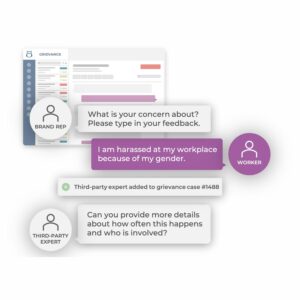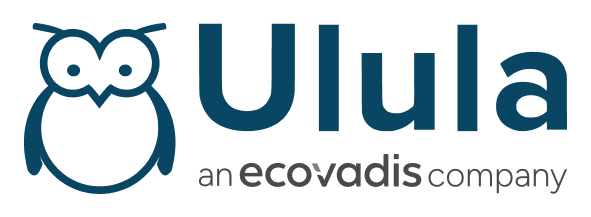As the US remains engulfed in a child labor crisis, companies with US supply chains may be bewildered by the number of state child labor laws tabled in the US. Changes to these laws could expose companies to child labor risks.
Numerous states are looking to strengthen laws, but a similar number are weakening them too. Amid a federal clampdown, labor shortages, a migrant worker crisis, large settlements and reputation scandals, companies need practical solutions that can inoculate them from the reputational, financial and criminal risks that child labor violations can bring.
Overview: How Child Labor Laws are Changing in the US
According to the Washington Post, child labor violations have tripled in the last decade. With the number of unaccompanied children entering the US hitting 130,000 in 2022, primarily due to economic crises in neighboring countries, the risk of children working, often hidden in US supply chains, is growing. Yet perspectives on dealing with the problem differ, which has led to a patchwork of inconsistent laws across the country.

The rules at the Federal level are clear, but they’re also weak and almost a century old. Still, the US Government has made a series of statements acknowledging the problem of child labor, including the formation of a child labor task force.
The tabled but not yet bipartisan CHILD Act would increase civil monetary penalties and allow federal authorities to issue stop-work orders. The US Department of Labor also released new guidance for assessing child labor law penalty assessments, meaning judges can now apply existing fines on a per violation rather than per child basis.
Keeping track of state laws is difficult. We’ve compiled an overview of the key enacted and proposed changes here:
| STATE | PROPOSED | IN FORCE |
| Alabama | Removal of verification requirement of age and parental consent. | |
| Arkansas |
|
|
| California | Workplace rights must be taught to children in schools. | |
| Colorado | A Bill that allows injured children to sue employers. | |
| Florida | Allow 16-17 year olds to carry out roofing work in some circumstances. | 16-17 year olds can work a 30-hour week, potentially without rest breaks. |
| Georgia |
|
|
| Illinois |
|
|
| Indiana |
|
|
| Iowa |
|
|
| Kentucky | Nonprofits can hire 12-13 year olds. | No state child labor laws can be stricter than federal laws. |
| Maine |
|
|
| Michigan |
|
|
| Minnesota |
|
|
| Missouri | Removal of age verification and parental consent requirements. | |
| Nebraska | Lower minimum wage for youth workers. | |
| New Hampshire: | Lower age to serve alcohol and extended working hours. | |
| New Jersey | Extended working hours and less required break time. | |
| Ohio | A Bill would allow students aged 14 and 15 to work until 9pm during the school year with their parents’ permission. | |
| Pennsylvania |
|
|
| Tennessee | 16-17 year olds can serve alcohol. | |
| Virginia | Fine for routine child labor violations increased to $2500. | |
| West Virginia | Elimination of youth work permits and parental consent requirements. | 16-17-year-olds can work roofing jobs with parental consent. |
| Wisconsin | 14-year-olds can serve alcohol. |
Paying the Price for Child Labor
The highest price paid for child labor will always be the victims, and that price is being paid every day in human suffering — companies who don’t see that, or are implicated, risk reputational damage with customers and the media.

Settlements remain an incentive for companies to deal with child labor in the supply chain.
Settlements remain an incentive for companies to deal with child labor in the supply chain. The Federal clampdown has resulted in several high–profile damages claims.
What’s Wrong with the Tools to Hand?
Companies and Governments rely on tried-and-tested policies to detect child labor, but many are outdated. Questionnaires, private/in-person audits and on-site interviews can’t always detect child labor in supply chains. When it comes to audits, sub-suppliers are often overlooked. Suppliers frequently pay for private auditors, and some large corporations still maintain a culture of avoidance, creating a negative incentive structure.

Detecting child labor isn’t aways easy
Detecting child labor is not always easy. Some children only work at night, for example, and auditors may only arrive on-site during the day. Many children are migrant children, often illegal and/or unsupervised. Language barriers are an obstacle to the detection of child labor. Victims frequently don’t report instances of child labor as they are trying to hide within the system, feel they may make themselves criminally culpable or aren’t aware of the support on offer.
How can Companies Defend Themselves Against Child Labor in the Supply Chain?
Government inspections have seen a 470% increase in child labor instances since 2015. Major US companies are moving to eliminate child labor from their supply chains, but how? How can they reveal human rights issues in their factories and support the most vulnerable and hidden workers?
Ulula’s digital risk assessment and grievance tools can bridge the information gap by going directly to workers with anonymised, multilingual surveys and complaints channels accessible anytime, anywhere, not just when and where it’s convenient for an audit.

Ulula’s digital risk assessment and grievance tools can bridge the information gap
Empowering the workers with the tools they need to combat child labor will help bring the solution to the factory floor. An ‘always on’ solution on their own devices means they can provide information on potential child labor infringements when it’s safe to do so without fear of reprisals.
Ulula enables a proactive approach to the problem. Brands and suppliers can stay one step ahead of the ongoing child labor crisis and inoculate themselves from the risks. Use Ulula’s tools to carry out a child labor risk assessment and start establishing an effective grievance and complaints system that will ensure they stay on top of child labor.
Nobody wants to find child labor in their supply chain. Accountability is the reality. Contact us to build the safeguards to prevent child labor risks in your business activities.

